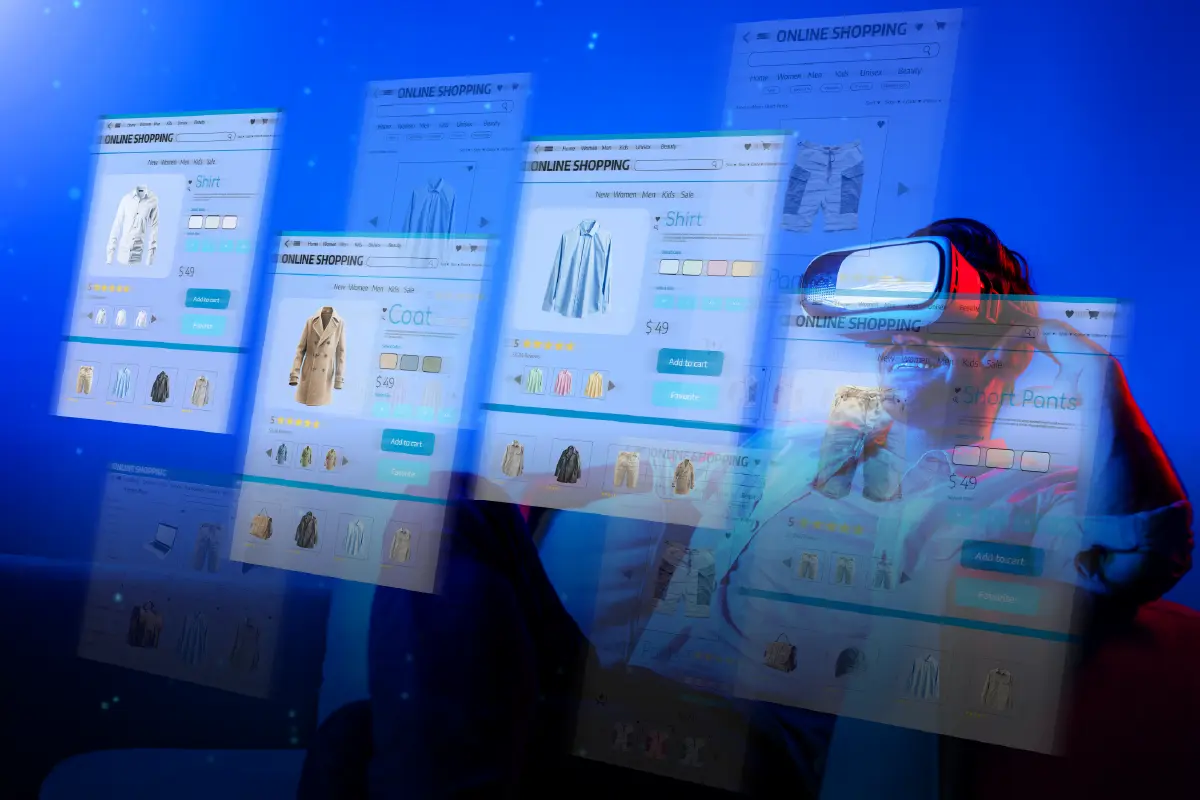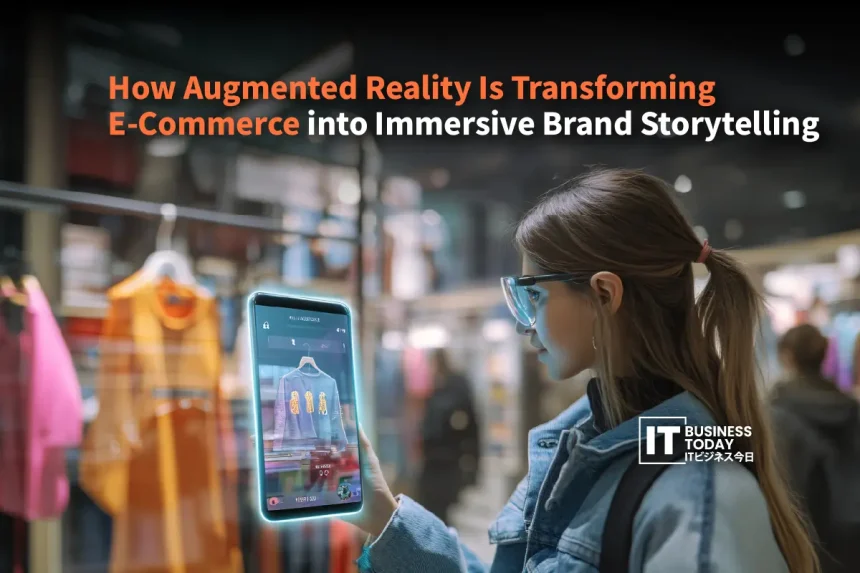Scroll. Click. Add to cart. That’s what online shopping has boiled down to. Convenient, sure, but lifeless. You can buy almost anything today without leaving your couch, yet you still don’t really see what you’re buying. A couch looks great in the photo and then too big for your room. A lipstick shade looks perfect on the model and dull in real light. That’s the sensory gap e-commerce never solved, the space between what we see on screen and what we actually get in real life. It’s also why return rates keep climbing and customer trust keeps dipping.
Now a quiet revolution is closing that gap. Augmented reality is turning flat browsing into something you can feel and interact with. It doesn’t just show the product; it puts it in your world.
This shift is changing what e-commerce even means. AR isn’t just another tech upgrade. It’s the moment online shopping stops being a transaction and starts becoming a story you can step inside.
Also Read: Why Japan’s ‘Society 5.0’ Vision Is Becoming a Reality: AI Agents in Smart Manufacturing
The Core Transformation of Immersive Experience
It’s one thing to look at a product. It’s another to experience it before buying. For years, e-commerce has been trapped in two dimensions, relying on flat photos and polite guesses. But consumers are done imagining. They want to see, rotate, and visualize products in their own space. That is where augmented reality quietly flipped the script.
Customers have totally stopped seeing static images and instead, actively play with 3D product models that act like the real ones. You can rotate to see the insides of the sneaker, or a couch can be put in the living room to see how it fits the light and arrangement. The change from 2D to 3D is not only to make shopping more interesting but also to make it easy to decide. The brain will not have to find the connection between fantasy and real life anymore.
Shopify’s 2025 study on AR in retail found that products with 3D visualization led to noticeably higher conversion rates and longer user engagement. That is not just tech hype, it is proof that when people understand what they are buying, they trust it more. In fashion, virtual try-on tools are helping shoppers test lipstick shades or shoe sizes from their phones, while furniture retailers use ‘View in Room’ features to eliminate the endless cycle of ‘maybe’ and ‘returns.’
And here is the real psychological kicker. When a shopper interacts with a product in their own context, on their face, in their room, or against their wall, their brain treats it as already owned. That sense of ownership kills hesitation and boosts confidence. So instead of a transaction, the experience becomes a moment of discovery.
This is how augmented reality has quietly evolved e-commerce from guesswork to genuine interaction, turning every product view into an experience that feels personal, playful, and real.
Brand Storytelling that Feels Real
Storytelling has always been how brands make people care. But augmented reality changes how that story gets told. The participation of the users in the scene is the drastic change that turns the once silent spectators into the true actors of the event. The user’s abode instantly becomes the location, and their mobile phone functions as the lens that brings the brand into their actual universe. Thus, the brand no longer looks like just a screen image. It starts living in your space, in your day, in small moments that actually feel personal.
Good AR storytelling stands on three things. First is context. It is not about showing what a product does anymore. It is about showing how it fits into real life. A kitchen tool showing up on your counter. A sneaker blending into your outfit. A sofa sitting in your living room while you decide if it feels right. That’s the level of connection that flat ads can’t reach. Then comes emotion. People like trying new things, especially when it feels a bit futuristic. That spark of curiosity turns into excitement.
When someone plays with an AR feature, they are not just checking out a product. They are feeling something. And that feeling is what sticks. That’s what builds recall and trust, without the brand ever having to say a word. The third piece is personalization. AR lets people see themselves in the story instead of just watching it. It takes away the guessing game of how something might look or fit. It gives them proof right there in their own space.
Look at IKEA. Their AI-powered digital experience lets people build entire rooms virtually, swapping furniture and lighting until it feels like home. They are not just selling furniture. They are helping people imagine their future spaces with confidence. It’s practical but also kind of magical. Then take Nike. They brought in AR try-on tools through projects like the Deep AR campaign. Shoppers can point their phone at their feet and see how the sneakers look in real time. No store visit. No second guessing. It’s quick, personal, and feels real.
When brands get AR storytelling right, it hits different. It stops feeling like advertising and starts feeling like participation. Its curiosity mixed with play. It’s real emotion sitting inside everyday life. That’s what separates the brands people scroll past from the ones they remember.
The Business Side of AR The Real Payoff of Immersion, Trust, and Retention

Let’s be honest. All the tech talk means nothing if it doesn’t bring money back to the table. Augmented reality is not just some fancy digital trick. It is showing up where it matters most, in sales and trust. Adobe’s 2025 Digital Economy Index shows that e-commerce spending in the U.S. hit around $331.6 billion just in the first half of the year. That’s huge, and inside that number, the brands using AR are standing out because they are not selling guesses anymore. They are selling clarity.
When people can actually see and feel what they are about to buy, they stop overthinking. They click faster, spend more, and feel better about what they bought. That’s how the average order value goes up. It’s not a mystery. If you know the product fits your life, you buy it with confidence. And that’s where customer lifetime value gets its real boost. People come back to the brands that don’t make them second-guess. AR gives that kind of trust.
Now, talk to any retailer and they’ll tell you their biggest pain is returns. Wrong color, wrong fit, wrong expectation. Every single one costs time, money, and patience. AR fixes this in a very simple way. Only after a customer is absolutely sure about the purchase is he/she allowed to proceed to the checkout. Imagine being able to place a sofa in your living room and judging whether it matches your wall color or not. Shoes and glasses can be virtually tried on and their suitability for the customer can be assessed. Hence, it leads to less surprises and lower returns. It saves money and saves face.
There’s another angle too. Every AR interaction gives brands smarter data. Not the usual empty metrics like clicks or page views, but what really matters is what people try on, what angle they rotate, what environment they use it in. That kind of information tells brands what customers actually care about, not just what they skim through. It helps them build better recommendations and smarter personalization.
And now with WebAR, you don’t even need to download anything. You can just tap and try straight from your browser. That small change makes a massive difference because it opens the door for everyone, not just tech-savvy users.
At the end of the day, AR is not a showpiece. It’s the new backbone of e-commerce. It cuts waste, builds trust, and makes the shopping journey feel real again. In a world full of noise, that kind of authenticity pays for itself.
The Future of the Brand-Consumer Relationship

If you step back and look at the full picture, augmented reality has done something big for e-commerce. It has turned what used to be a flat, transactional click into something alive and emotional. Shoppers are no longer staring at screens guessing what a product might feel like. They are living the story that brands are trying to tell. AR has blended utility with storytelling, and that mix has made the online experience both more useful and more human. It builds trust because people finally get to see things as they are meant to be seen.
Now the next chapter is already unfolding. AR is starting to team up with AI, which means it won’t just show what looks good but also predict what fits best. Think of it as your personal stylist or designer that actually knows your taste. And with spatial computing and lightweight smart glasses coming into the picture, this won’t stay limited to screens. It will move into the real world, where digital and physical blur completely.
Even the biggest players like Apple, which pulled in $102.5 billion in Q4 2025, are betting hard on that shift. The message is clear. The next wave of e-commerce won’t be about selling things. It will be about creating worlds people want to live inside.







